Description
IMPORTANT NOTES
- UPDATE YOUR FIRMWARE: Please upgrade the firmware on your FM9. and make sure to use the latest version of FM9 Edit before installing this preset. If your firmware is not up to date, this preset may not load.
- EVERYTHING IS STOCK: This preset does not use third party IR’s. If you’d like to experiment with 3rd party IR’s, feel free to do so in the cab block.
- CUSTON LAYOUTS BUILT IN: We have designed three custom layouts, allowing you to easily navigate between individual effects mapping and scenes. See the notes on Per-Preset mapping and Custom Layouts below.
- DESIGNED FOR ACOUSTIC GUITARS: This preset is designed to be used with acoustic guitars, or with electric guitars that have a piezo pickup. It is not designed to make an electric guitar (with magnetic pickups) sound like an acoustic.
SIGNAL FLOW AND EFFECTS
- Input 1 (the Input Noise Gate is turned off to save CPU).
- Compressor 1
- Channel A: JFET Compressor (1176 Style Comp): set to be somewhat transparent, general use comp. This is the compression setting we recommend.
- Channel B: Studio FF Compressor 1: set to be somewhat transparent, general use comp.
- Channel C: Dynamicomp (Dynacomp): Lots of compression and squish.
- Channels D: Optical Compressor (LA-2A style)
- Cab 1 (for use with Acoustic IR’s – off on all scenes by default)
- We have included the cab block so you can load acoustic IR’s. We have dialed it in to sound great with the Worship Tutorials acoustic IR’s. You may want to tweak the Level, Preamp, and Room/Air settings for use with other manufacturer’s IR’s.
- Paremetric EQ 1
- Always on EQ. This is a general use EQ setting that should work well for most acoustics. It rolls off low end and adds brightness.
- Only channel A is set up.
- Vol/Pan 1
- NOTE: The ‘Volume’ parameter is NOT MAPPED. You’ll need to map this parameter to an expression pedal if you’d like to use the volume block
- PanTrm 1
- Channel A : Tremolo – fixed tempo
- Channel B: Harmonic Tremolo
- Channel C: Bias Trem – Bradford’s ramping trem settings (based on LFO1a)
- Channel D: Tremolo (1/16 note sync – set for a choppy trem sound)
- Chorus 1
- Channel A : Dimension 1
- Channel B: Stereo Tri-Chorus
- Channel C: Analog Stereo
- Channel D: Digital Stereo (set for a Vibrato sound)
- Graphic EQ 1: ‘Brighter/Darker’ settings
- Channel A: This EQ will add highs and take away lows. It’s mapped to a button labeled ‘Brighter’. Use this with darker acoustics. Off by default
- Channel B: This EQ will add lows and take away highs. It’s mapped to a button labeled ‘Darker’. Use this with bright/thin sounding acoustics. Off by default
- Channels C-D: Not set up
- Delay 1: (Quarter and 8th note delays in series)
- Channel A: Analog Stereo (1/4 delay with a wide stereo field)
- Channel B: Lo-Fi Tape (1/4 delay with a wide stereo field)
- Channel C: Analog Stereo (1/8 delay with a wide stereo field)
- Channel D: Lo-Fi Tape (1/8 delay with a wide stereo field)
- Delay 2: (Dotted 8th and dual stereo delays)
- Channel A: Stereo Mind Guy (dotted 8th)
- Channel B: Stereo Tape (dotted 8th)
- Channel C: Stereo Mind Guy (1/8 and Dotted 8th in stereo)
- Channel D: S Stereo Tape (Dotted 8th and Quater in stereo)
- Reverb 1: (‘Normal’ verbs in parallel)
- Channel A: Wide Hall
- Channel B: London Plate
- Channel C: Recording Studio C
- Channel D: Medium Spring
- Reverb 2: (Big ambient verbs in parallel)
- Channel A: Stratocumulus
- Channel B: Cirrocumulus
- Channel C: Deep Space
- Channel D: Nimbostratus
- Parametric EQ 2: Notch Filters. This EQ acts as a notch filter – use it if you are experiencing feedback in a live environment.
- Channel A: Notch filter for the Low E string
- Channel B: Notch filter for the A string
- Channel C: Notch filter for the D string
- Channel D: Notch filter for the G string
- Vol/Pan 2: Set up to give you a 3dB boost (only channel A is set up)
- Looper
- Out 1
SCENES
The following scenes are set up for instant access to various tones:
- Scene 1: DRY. Only compression and the main EQ
- Scene 2: BASIC HALL. Hall reverb (subtle)
- Scene 3: BASIC SPRING. Spring reverb (subtle)
- Scene 4: AMBI. Lots of delay and ambient reverb
- Scene 5: RHYTHMIC DLY. Dotted 8th + 1/4 delay
- Scene 6: AMBI TREM. Ambient reverb + tremolo
- Scene 7: AMBI CHORUS Ambient reverb + chorus
- Scene 8: SWELLS. Big ambient swells
USAGE NOTES
CAB BLOCK (Designed for use with IR’s – Acoustic IR’s are not included with this preset)
Acoustic Impulse Responses can make a massive difference in your direct acoustic tone. We’ve included a cab block to allow you load them (the FM9 does not include an IR player block, but the cab block works great). We’ve tweaked the Level, Preamp, and Room/Air sections to be optimized with Worship Tutorials IR’s, so if you are using IR’s from another company, you may need to adjust these settings.
EQ: PARAMETRIC EQ 1: This is meant to be an always-on EQ. It does basic tone shaping for acoustic guitar.
EQ: GRAPHIC EQ’s: These EQ blocks can make your overall sound brighter or darker. If your guitar sounds too dull or dark, engage the ‘Brighter’ EQ. If your tone is too bright or thin, engage the ‘Darker’ EQ.
EQ: PARAMETRIC EQ 2 (NOTCH FILTERS): This parametric EQ block on the bottom row is meant to serve as notch filters to eliminate feedback. These four EQ’s notch out frequencies on the lower four strings on acoustic. If you are experiencing feedback on the low E string, engage channel A. If you are experiencing feedback on the A string, engage channel B. If you are experiencing feedback on the D string, engage channel C. If you are experiencing feedback on the G string, engage channel D.
STEREO
This preset is in stereo. If you are running mono, you’ll want to set up FM9 to sum the preset to mono.
The easiest way to make this adjustment is in the ‘Setup’ menu:
- Choose ‘Setup’, and select ‘I/O’
- In OUTPUT 1 CONFIGURATION (choose the physical output you are using), change the ‘Mode’. Select ‘STEREO’ if you are running in stereo. Select ‘’SUM L+R’ if you are running mono. This will convert your output to mono and sum the stereo image. This will also cause all your presets to output in mono, as it is a global setting.
BLOCK CHANNELS
For almost all blocks, we’ve set up multiple channels to give you different options for any given effect. Feel free to experiment and find the sounds you like best. However, not all blocks have all four channels set up – some have just couple, and some only one. See the Signal Flow section above to see what is set up in what channel for any given block.
DELAYS
We’ve used all four channels of three delay blocks (that’s 12 different delays!) . Each delay block runs in parallel with the others so the delays don’t run into each other.
Delay blocks are separated into different delay times. For example, Delay 1 is all quarter or 1/8th note delays. Delay 2 is all dotted 8th noted delays, and Delay 3 is all stereo dual delays. Delay three is a bit different because each channel will give you different rhythmic delays, and Channel D is set to give you a huge wash for swells.
The delays run between the amp and cab to simulate an effects loop in an amp. This means the cabinet will filter the tone of the delays, making them a bit less clean/pristine (we prefer the way they sound this way). Feel free to move them all after the cab (but before the verbs) to experience them in a different way.
REVERB
We’ve set up reverbs the same way as delays – each reverb block contains four versions of the same type of reverb (normal and big).
Reverb blocks 1 and 2 give you ‘normal’ and ambient reverbs respectively.
PER-PRESET MAPPING AND OVERRIDES
We’ve set up Per-Preset overrides for both effects and scenes, and we’ve mapped them to Layouts 6 (FX1 WT), 7 (FX2 WT) and 8 (Scenes WT). See below for more info on how the button mapping and custom layouts work.
HERE ARE THE PER-PRESET MAPPINGS AND THE BUTTONS THEY’RE ASSIGNED TO OVERRIDE
PP1: Scene 1
PP2: Scene 2
PP3: Scene 3
PP4: Scene 4
PP5: Scene 5
PP6: Scene 6
PP7: Scene 7
PP8: Scene 8
PP9: Compressor 1
PP10: Delay 1 A – ‘1/4 Delay’
PP11: Delay 2 A – ‘1/8d Delay’
PP12: Delay 2 C – ‘Dual ST Delay’
PP13: Reverb 1
PP14: Reverb 2
PP15: TremPan 1 A
PP16: TremPan 1 C (Ramping trem – uses LFO 1 to ramp)
PP17: Chorus 1
PP18: GEQ 1 A – ‘Brighter’ EQ
PP19: GEQ 1 B – ‘Darker’ EQ
PP20: Vol/Pan 2 – Boost
PP21: PRESETS BUTTON
PP22: VIEW BUTTON
PP23: Not assigned
PP24: Tap Temp/Tuner
MAKING CHANGES TO THESE ASSIGNMENTS
If you’d like to change any of these assignments (either the Per-Preset Assignments or the Overrides), you can do so in the ‘FC Controllers’ and ‘Per-Preset FC’ menus in FM9 Edit, or by editing the ’CONTROLLERS’ menu on the FM9.
If you would like to go back to your default settings for Layouts 7 and 8, you can reset the Overrides from the ‘Overrides’ menu in the ‘Per-Preset-FC Settings’ section.
USING THE CUSTOM LAYOUTS
Our FM9 Presets use Layouts 6, 7, and 8. Each of these layouts utilizes the three buttons below the display as utility buttons, and the six buttons on the right change depending on what layout you are on. All of these buttons utilize Per-Preset mapping, so they won’t mess with you existing presets.
LAYOUTS:
- Layout 6 (FX1 WT): This layout gives you reverbs and delays
- Layout 7 (FX2 WT): This layout gives you modulation and EQ
- Layout 8 (SCENES WT): This layout gives you scenes
UTILITY BUTTONS (Below the display)
- Tap Tempo/Tuner: Tap tempo, and press and hold to tune.
- PRESETS. Tapping on this button recalls Layout 1, which is by default a preset menu. Press and hold to move down one preset.
- VIEW: Tapping on this button will cycle through Layouts 6, 7, and 8, allowing you to cycle through the different effects and scenes layouts. Press and hold to move up one preset.
We have also included a Custom Layouts file. You can import this using FM9 Edit. We have altered Layouts 6, 7, and 8, so the rest of the layouts will import as the factory settings.
To use the Looper, go to the Master Layout (9) and choose the Looper layout (by default it is layout 6). The looper is engaged in all scenes, so it will work properly from the Looper layout.
MAKING ADJUSTMENTS FOR YOUR SETUP
SETTING THE PRESET UP FOR YOUR GUITAR
All guitars are different, so you may want to make changes to suite your playing style and guitar. To adjust the preset for your guitars, the primary controls to adjust would be:
- EQ settings (PARAMETRIC EQ1). The parametric EQ can do most of the work necessary to shape the overall tone of the preset. If your guitar sounds to bright/thin, remove highs and add low end. If it is too boomy or dark, remove low end and add highs. You can also engage the ‘Darker/Brighter’ Graphic EQ’s.
- Volume/Output level. Acoustic guitars can vary quite a bit regarding the output level of the pickup systems installed in them. Most guitars have a volume control on the preamp. You want the output of the guitar to engage the compressor, but not by a large amount. FM9 will show you the level of gain reduction on the compressor. You want to see between 3 and 5db of gain reduction. If you are seeing more than that, try to lower the level coming from the guitar. You can also adjust the threshold control on the compressor. From there, you can adjust the overall volume of the preset by using the output level of the compressor block, or the output level of the ‘Out’ block.
ADJUSTING THE OVERALL LEVEL OF THE PRESET
The FM9 offers very useful tools to check overall level of individual presets and blocks. In the Output block you can monitor the overall output level. You can also monitor levels of each block individually from the front screen of the FM9.
We’ve set this preset up so that the loudest settings peak around 0db (or a bit above). If you’d like to adjust the level up or down (to match it with other presets), we recommend adjusting one of the following:
- Level (amp block – basic). This will adjust the overall level of the preset up/down. Avoid using the ‘Master Volume’ control, as this will change the tone of the amp.
- Level (cab block). This will also adjust the overall level of the preset up/down.
CHANGELOG
Version 1.0 – 2021-09-22

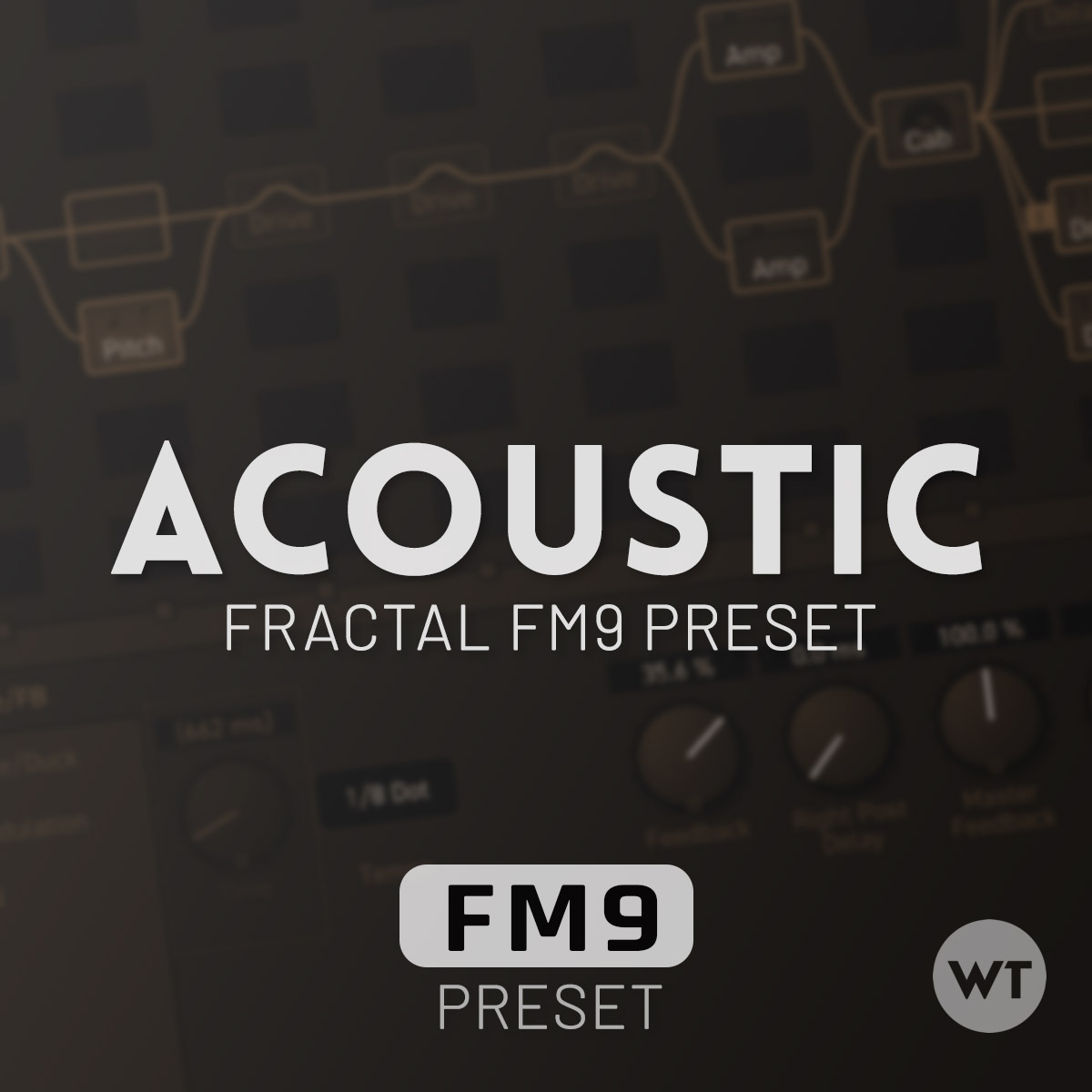
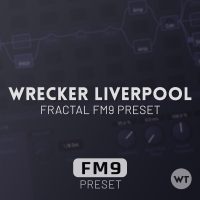
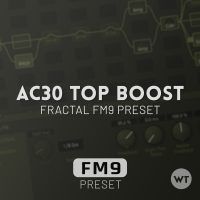
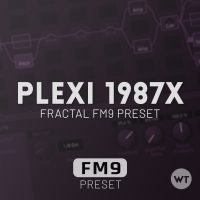
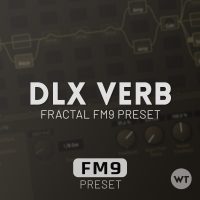
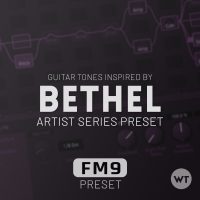
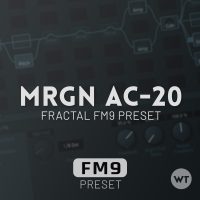
Reviews
There are no reviews yet.